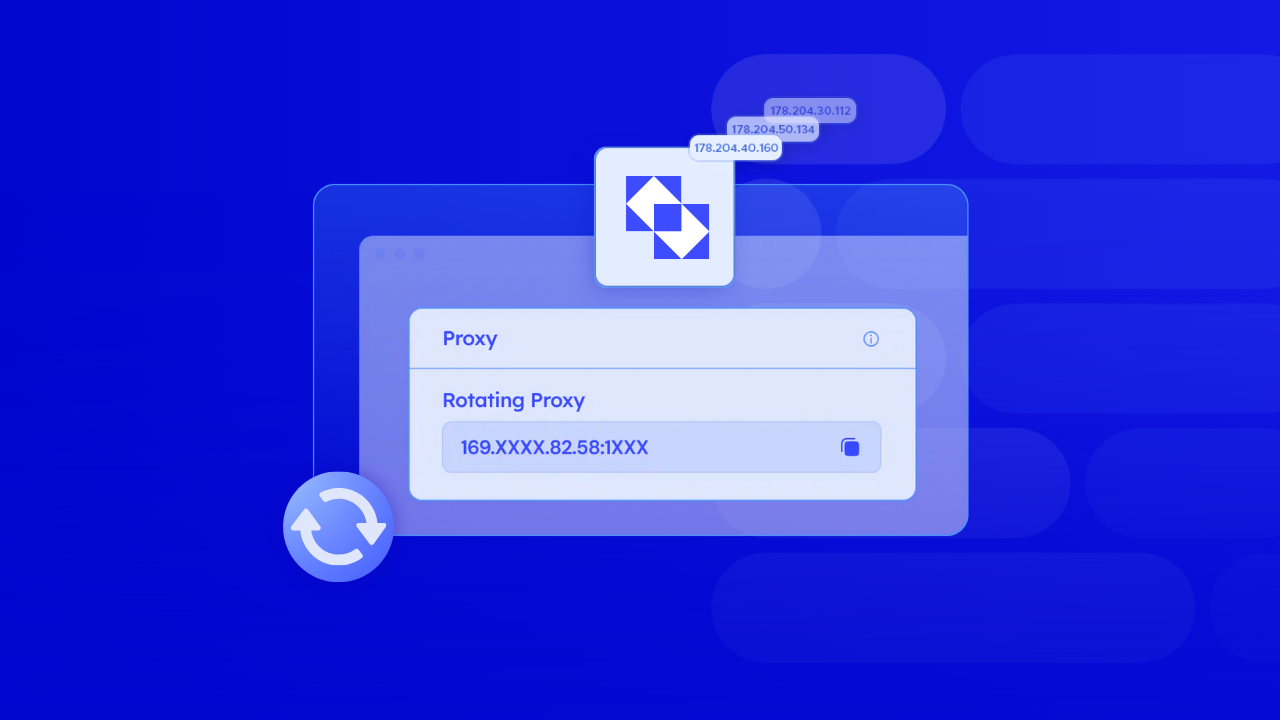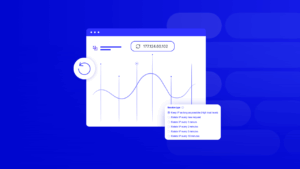With the growing need for security and anonymity on the Internet, rotating proxies are becoming an important tool for efficient operation. Systems with automatic IP address changes provide stability during long-term operation and avoid congestion. These proxies are suitable for users who require a high degree of privacy and security.
Related: “SOCKS vs HTTP Proxy – What’s the Difference?“
What is a Rotating Proxy?
A rotating proxy is a type of proxy server that automatically changes its IP address at regular intervals or after each request.
Imagine a pool of IP addresses from different geographic locations. A Rotating proxy selects a new IP address from the pool each time you make a request. This gives the impression that you are browsing the Internet from different locations, confusing sites and preserving your anonymity. Essentially, a proxy is an IP address that you can change as needed. It keeps your IP address “fresh” and helps you stay undetected.
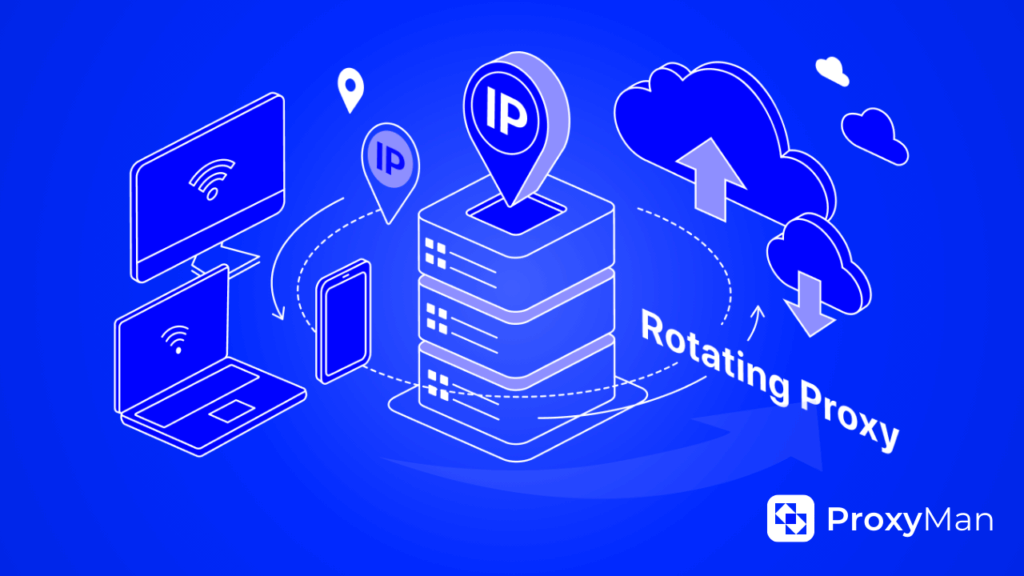
Applications of Rotating Proxies
Some applications of IP rotating proxies:
- Digital marketing. Proxies are used to manage multiple social media accounts and run advertising campaigns without the risk of being blocked.
- Marketing research. Proxies allow you to analyze content from different locations to get local market data.
- Web scraping. Proxies help bypass IP blocking and request limits set by websites.
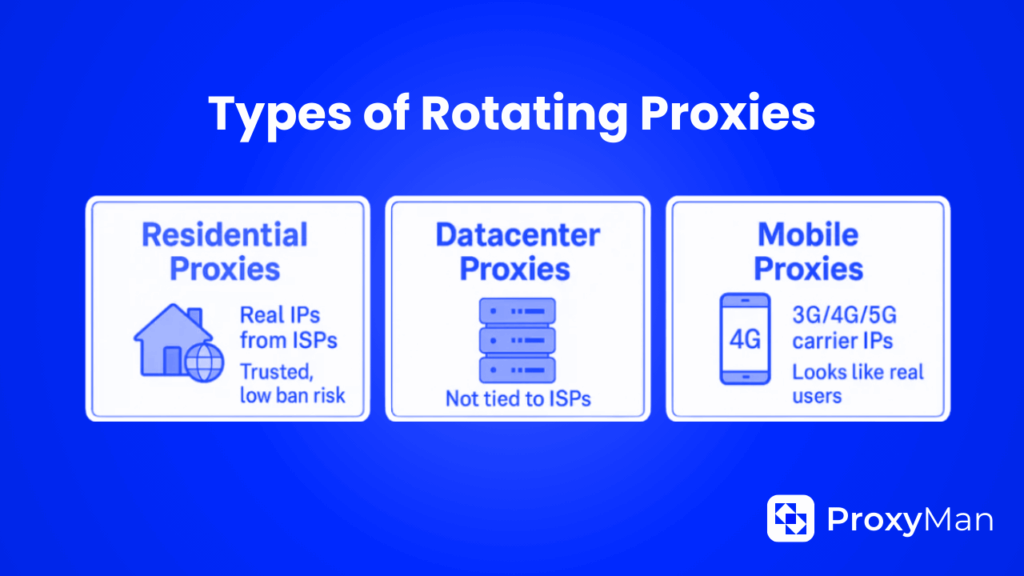
Types of Rotating Proxies
There are different types of proxy rotate ip:
- Datacenter. They use IP addresses provided by hosting providers and data centers. These proxies are fast and affordable but are more likely to be detected and blocked compared to residential or mobile IPs.
- Resident. They use real IP addresses of home and corporate network users. Such proxies are rarely blacklisted and are less susceptible to blocking.
- Mobile. They use IP addresses provided by mobile operators of GSM networks.
Key Features of Rotating Proxies
To understand what is a rotating proxy, you need to know some of its main features:
- Anonymity. Constantly changing IP addresses makes it difficult to trace the origin of requests to a single source.
- Ability to bypass IP-based bans. By brute-forcing IP addresses, proxy servers can bypass IP-based speed limits and bans imposed by Web sites.
- Geographic diversity. Rotating proxies can offer IP addresses from different locations, allowing users to access geographically restricted content and test the availability of websites from different regions.
- Load balancing. Rotary proxies distribute incoming requests across multiple IP addresses, preventing overload on a single IP address and improving performance.
- Convenient connectivity. Proxies with rotation work in a loopback scheme, clients can connect them to work software and services with a single line.
- Multiple rotation options. You can choose on-demand rotation (the client receives a special link from the provider) or automatic IP address change (at certain time intervals, for example, every few minutes).
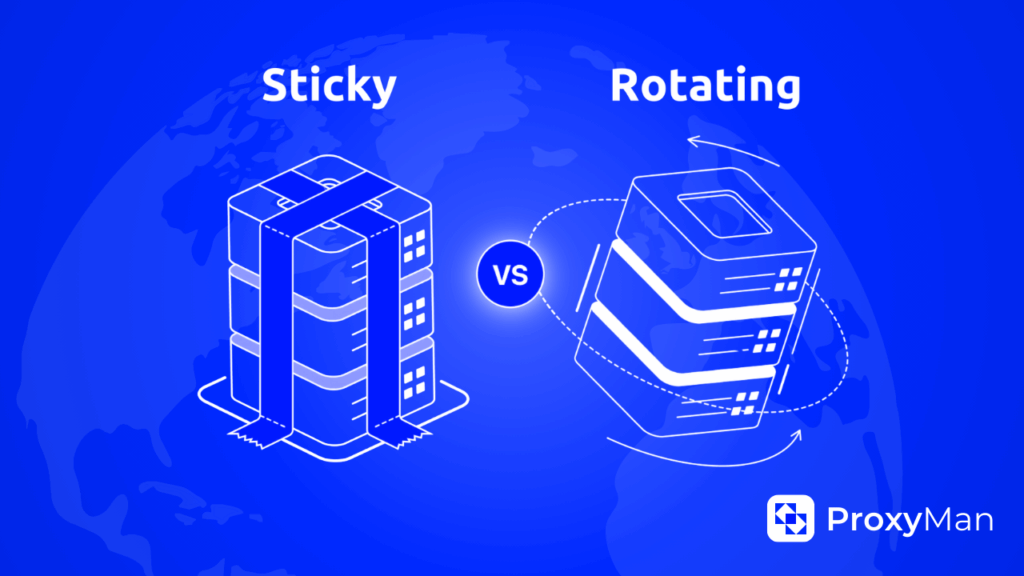
How Does a Rotating Proxy Server Work?
Rotating proxy server automatically assigns a new IP address from their pool to each web request. This frequent change of IP addresses increases anonymity and prevents detection by Web services, which can block access if they detect multiple requests coming from the same IP address. In practice, the way it works is as follows:
- The user of the proxy service specifies in the settings of his software (browser, bot, lor, etc.) not the IP address of the final proxy server, but the IP address of the proxy gateway.
- The proxy gateway selects a random proxy from the pool and sends the request through it.
- The destination site sees only the IP address of this random end proxy server, not the IP address of the gateway or the actual IP address of the proxy service user.
IP rotation can occur under different scenarios, the most popular of which are time rotation and link rotation:
- Time rotation. IP address changes at a predetermined interval, for example, every 5 minutes.
- Link rotation. Allows you to change the IP with each new request to the server.
As a rule, the appropriate rotation model is selected by the user at the stage of proxy purchase, depending on the specifics of tasks and automation requirements.
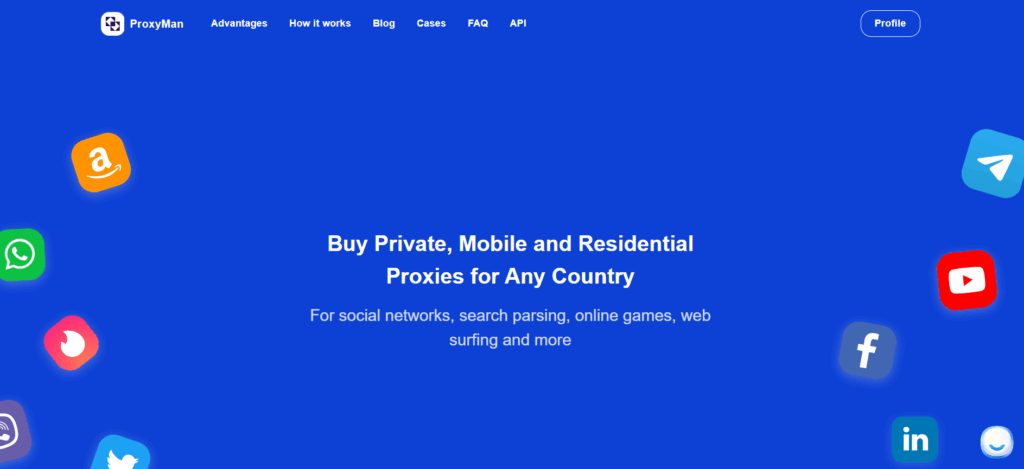
How to Buy Rotating Proxy Using Proxy-Man
One of the most convenient ways to buy a rotating proxy is to use the proxy-man.com website. To do this, just follow the steps below:
- Open the registration page and create a new account, then log in to your control panel.
- Next, go to the “Recharge” section and deposit funds by any available method.
- Go to the “New Proxy” page and select the type of proxy you want: data center, resident or mobile.
- Select the desired country (e.g. USA), then specify the region, city and Internet Service Provider (ISP).
- Then. select the type of session: you can either use the same IP address for as long as possible, or set it to change at each request or at specific intervals (1, 2, 5, or 10 minutes).
- Choose your preferred protocol (HTTP(S) or SOCKS5) and specify a proxy traffic limit from 1 GB to 1000 GB depending on your needs.
- Check all the selected parameters: location, ISP, protocol, traffic volume and session type. Then click “Buy Now” to finalize your order and get access to the resident proxy.
- Copy the generated proxy credentials and paste them into your browser, application or automation tool.
FAQ
Q: What is the difference between an IP rotation proxy and a VPN?
A: VPNs encrypt all your traffic, providing a high level of security and keeping your data from being intercepted. Proxy servers generally do not encrypt data, but there are exceptions, such as HTTPS Proxy or TOR Onion Proxy.
Q: How secure are IP rotation proxies?
A: IP rotation proxies can be safe, as regular IP address changes make online activity less vulnerable to tracking and prevent blocking. The key is to choose quality fixed or mobile proxies and avoid free or unreliable services.
Q: Why change my IP address?
A: Users may want to change their IP addresses for various reasons: to improve anonymity, to increase efficiency, to bypass restrictions, to optimize their seo-strategy.

